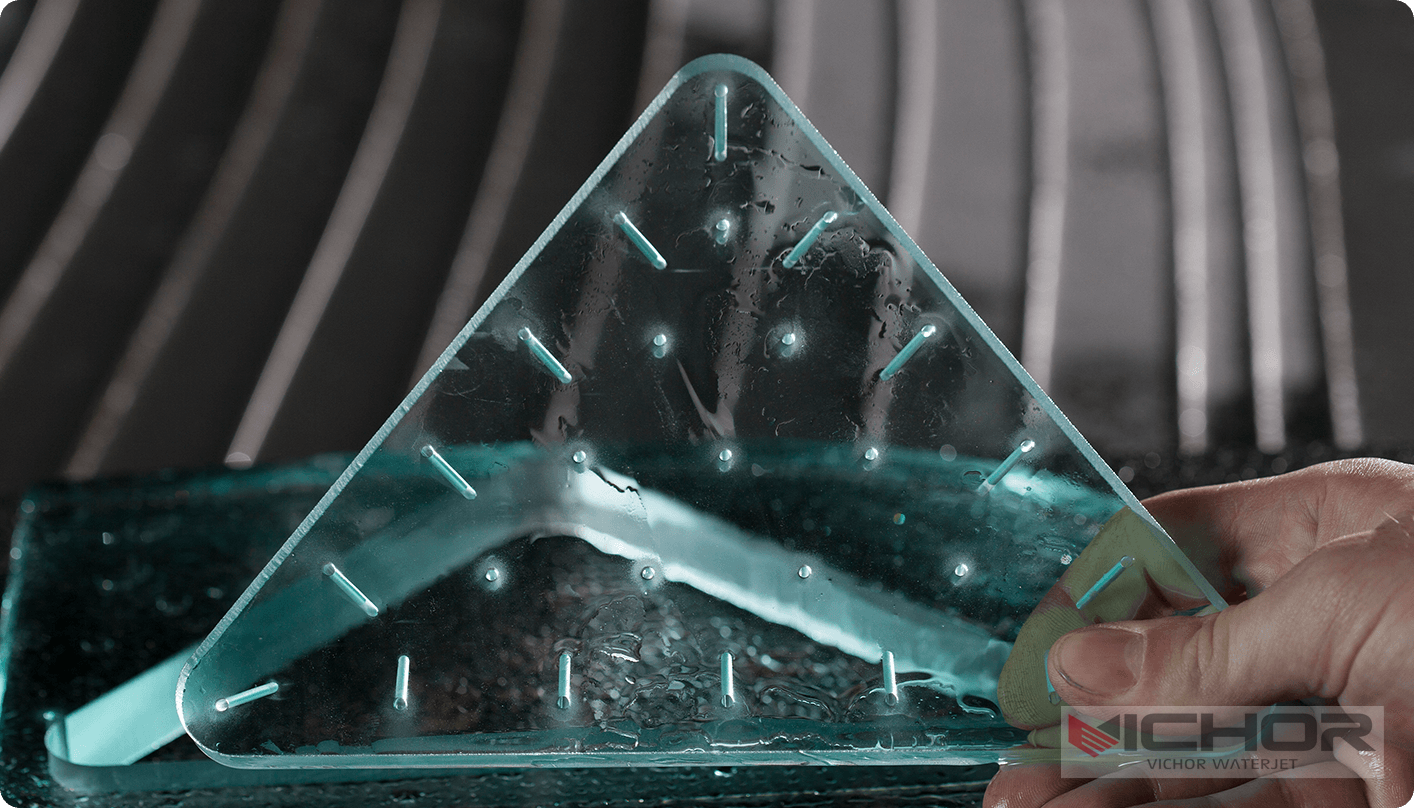
The Ultimate Guide to the Best Water Jet Cutting Machines in 2025: How to Choose the Right One
When it comes to precision cutting in industries like manufacturing, aerospace, and automotive, water jet cutting machines have revolutionized the way we handle materials. Whether you’re slicing through metal, stone, or composites, finding the best water jet cutting machines can make all the difference in efficiency, cost, and quality. In this comprehensive guide, we’ll dive into the applications, key selection criteria, and top brands, including a spotlight on VICHOR, to help you make an informed decision. By the end, you’ll have a clear roadmap to identify the perfect machine for your needs, along with answers to common questions in our FAQ section.
What Are Water Jet Cutting Machines and How Do They Work?
Water jet cutting machines use a high-pressure stream of water, often mixed with abrasive materials like garnet, to cut through various substances with incredible precision. Think of it as a super-powered water gun that can slice through steel, glass, or even titanium without generating heat, which prevents material distortion. This cold-cutting process is ideal for sensitive applications where thermal damage is a concern. The best water jet cutting machines combine advanced CNC controls with robust pumps to deliver consistent performance. Over the years, this technology has evolved from simple industrial tools to sophisticated systems that cater to diverse sectors, making it a go-to solution for intricate designs and heavy-duty tasks. If you’re looking for versatility, these machines are unmatched—they handle everything from delicate artistic pieces to rugged industrial components.
Key Applications of Water Jet Cutting Machines in Modern Industries
The versatility of water jet cutting machines makes them indispensable across multiple fields. In the aerospace industry, for instance, they’re used to cut composite materials and alloys with tight tolerances, ensuring safety and reliability. Automotive manufacturers rely on them for shaping parts like gaskets and interior components, where precision is critical for assembly. Similarly, in the architecture and design world, these machines craft intricate patterns in stone, tile, and glass for stunning visual projects. Even the food industry employs water jets for portioning products without contamination, thanks to the hygienic, non-thermal process. When you invest in the best water jet cutting machines, you’re not just buying a tool—you’re unlocking potential for innovation in prototyping, custom fabrication, and mass production. This broad applicability means that whether you’re a small workshop or a large factory, there’s a model tailored to your demands.
Factors to Consider When Choosing the Best Water Jet Cutting Machines
Selecting the right water jet cutter isn’t just about picking the most expensive model; it’s about matching the machine to your specific needs. Start by evaluating the cutting precision and speed—higher accuracy often comes with advanced CNC systems, which are essential for complex designs. Next, consider the material types and thicknesses you’ll be working with. For instance, abrasive water jets are better for metals and ceramics, while pure water jets suit softer materials like foam. The pump pressure is another critical factor; machines with pressures above 60,000 PSI tend to offer faster cuts and better efficiency. Don’t overlook operational costs, including maintenance, abrasive consumption, and energy usage. Reliability and after-sales support are also key—brands like VICHOR provide comprehensive service networks, which can minimize downtime. Ultimately, the best water jet cutting machines balance performance with affordability, so assess your budget and long-term goals to avoid overspending on features you don’t need.
Top Brands in the Water Jet Cutting Market, Including VICHOR
The market is filled with reputable brands, but a few stand out for their innovation and reliability. VICHOR, for example, has gained traction for producing durable and user-friendly machines that cater to both beginners and experts. Their models often feature intuitive controls and high-pressure capabilities, making them a solid choice for those seeking the best water jet cutting machines without breaking the bank. Other notable brands include Omax and Flow Waterjet, which are known for their advanced software and precision engineering. KMT Waterjet also offers robust systems for heavy-industrial applications. When comparing brands, look at warranty terms, customer reviews, and technology integrations. VICHOR, in particular, emphasizes eco-friendly designs with reduced water and energy consumption, appealing to sustainability-conscious businesses. By researching these players, you can narrow down options that align with your operational scale and technical requirements.

Types of Water Jet Cutting Machines: Pure vs. Abrasive
Understanding the difference between pure and abrasive water jet cutters is crucial for making the right choice. Pure water jets use only high-pressure water and are perfect for cutting softer materials like rubber, foam, or food products. They’re generally quieter and have lower operating costs since no abrasives are involved. On the other hand, abrasive water jets mix garnet or other abrasives into the water stream, enabling them to slice through hard materials such as steel, stone, and titanium. This type is more common in industrial settings where versatility is key. The best water jet cutting machines often come with interchangeable heads, allowing you to switch between pure and abrasive modes as needed. This flexibility ensures that you can handle a wide range of projects without investing in multiple machines, saving both space and money.
Maintenance and Cost Considerations for Long-Term Use
Owning a water jet cutter involves ongoing maintenance to keep it running smoothly. Regular tasks include checking high-pressure seals, replacing abrasive nozzles, and cleaning the water filtration system to prevent clogs. These steps not only extend the machine’s lifespan but also maintain cutting quality. Cost-wise, the initial investment for the best water jet cutting machines can range from $50,000 to over $200,000, depending on features like automation and pressure levels. However, don’t forget recurring expenses like abrasive materials, which can add up over time. Energy efficiency is another factor—modern models from brands like VICHOR often include energy-saving modes to reduce electricity bills. By planning for these aspects, you can avoid unexpected downtime and ensure your machine delivers a strong return on investment through years of reliable service.
Why Investing in the Best Water Jet Cutting Machines Pays Off
In summary, choosing the best water jet cutting machines is a strategic decision that impacts your productivity and product quality. From understanding the technology and applications to evaluating brands like VICHOR, this guide has covered the essentials to steer your purchase. Remember, the ideal machine should align with your material needs, budget, and long-term goals. As you explore options, prioritize reliability and support to maximize uptime. With the right water jet cutter, you’ll unlock new levels of precision and efficiency in your projects.
Frequently Asked Questions (FAQ)
Q1: What materials can the best water jet cutting machines handle?
A1: The best water jet cutting machines are highly versatile and can cut a wide range of materials, including metals like steel and aluminum, stones such as granite and marble, composites, glass, plastics, and even softer items like foam or food products. The key is choosing between pure water jets for softer materials and abrasive water jets for harder substances.
Q2: How accurate are water jet cutting machines in real-world applications?
A2: Accuracy is a standout feature of the best water jet cutting machines, typically offering tolerances within ±0.003 inches (±0.076 mm) or better. This precision is achieved through advanced CNC controls and stable high-pressure systems, making them ideal for intricate designs and high-demand industries like aerospace and medical device manufacturing.
Q3: What is the average cost of maintaining a water jet cutter?
A3: Maintenance costs for the best water jet cutting machines vary but generally include expenses for abrasives (if used), nozzle replacements, and routine servicing. On average, annual maintenance can range from $5,000 to $15,000, depending on usage. Brands like VICHOR often provide cost-effective service plans to help manage these expenses.
Q4: Can water jet cutting machines be used for underwater operations?
A4: Yes, many of the best water jet cutting machines support underwater cutting, which reduces noise, minimizes splash, and improves cut quality by dampening the stream. This is especially useful in environments where dust or debris control is important, such as in confined workshops or when working with hazardous materials.
Q5: How does VICHOR compare to other brands in terms of reliability?
A5: VICHOR is known for producing reliable and efficient water jet cutting machines that compete well with established brands. They focus on user-friendly designs, robust construction, and strong customer support, making them a trustworthy option for businesses seeking the best water jet cutting machines without the premium price tag of some high-end competitors.
continue reading



